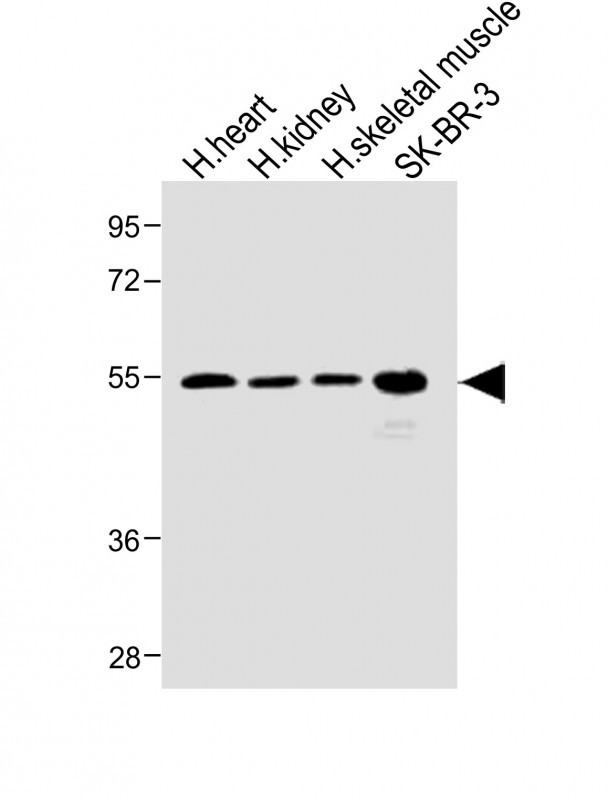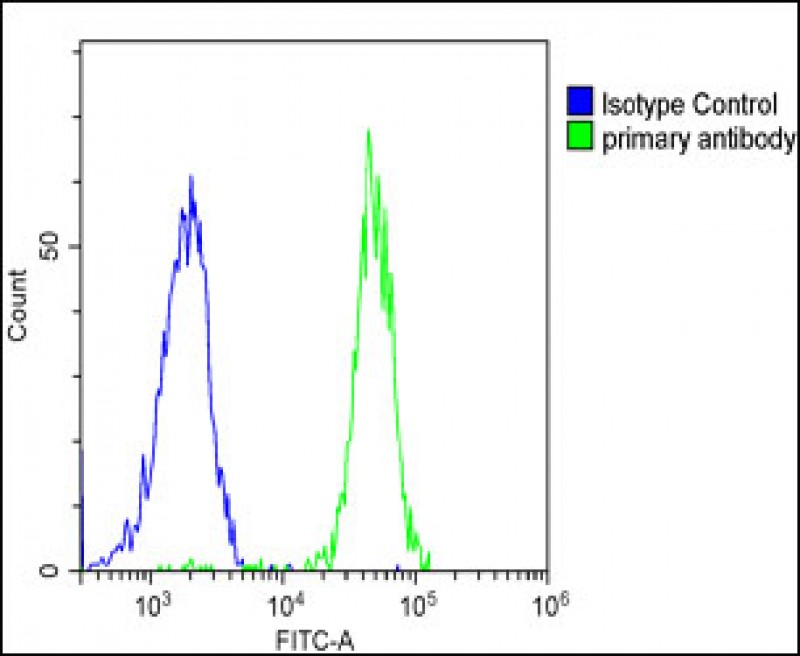SPNS2 Antibody (N-term)
Affinity Purified Rabbit Polyclonal Antibody (Pab)
- SPECIFICATION
- CITATIONS
- PROTOCOLS
- BACKGROUND

Application
| IHC-P, WB, FC, E |
|---|---|
| Primary Accession | Q8IVW8 |
| Other Accession | NP_001118230.1 |
| Reactivity | Human |
| Host | Rabbit |
| Clonality | Polyclonal |
| Isotype | Rabbit IgG |
| Calculated MW | 58044 Da |
| Antigen Region | 68-94 aa |
| Gene ID | 124976 |
|---|---|
| Other Names | Protein spinster homolog 2, SPNS2 |
| Target/Specificity | This SPNS2 antibody is generated from rabbits immunized with a KLH conjugated synthetic peptide between 68-94 amino acids from the N-terminal region of human SPNS2. |
| Dilution | IHC-P~~1:100 WB~~1:1000 FC~~1:25 E~~Use at an assay dependent concentration. |
| Format | Purified polyclonal antibody supplied in PBS with 0.09% (W/V) sodium azide. This antibody is purified through a protein A column, followed by peptide affinity purification. |
| Storage | Maintain refrigerated at 2-8°C for up to 2 weeks. For long term storage store at -20°C in small aliquots to prevent freeze-thaw cycles. |
| Precautions | SPNS2 Antibody (N-term) is for research use only and not for use in diagnostic or therapeutic procedures. |
| Name | SPNS2 {ECO:0000303|PubMed:19074308, ECO:0000312|HGNC:HGNC:26992} |
|---|---|
| Function | Lipid transporter that specifically mediates export of sphingosine-1-phosphate (sphing-4-enine 1-phosphate, S1P) and sphinganine-1-phosphate in the lymph, thereby playing a role in lymphocyte trafficking (PubMed:19074308, PubMed:21084291, PubMed:23180825). S1P is a bioactive signaling molecule that regulates many physiological processes important for the development and for the immune system (PubMed:19074308, PubMed:23180825). Regulates levels of S1P and the S1P gradient that exists between the high circulating concentrations of S1P and low tissue levels that control lymphocyte trafficking (PubMed:19074308, PubMed:23180825). Required for the egress of T-cells from lymph nodes during an immune response by mediating S1P secretion, which generates a gradient that enables activated T-cells to access lymph (By similarity). Also required for the egress of immature B-cells from the bone marrow (By similarity). In contrast, not involved in S1P release from red blood cells (By similarity). Involved in auditory function (PubMed:30973865). S1P release in the inner ear is required for maintenance of the endocochlear potential in the cochlea (By similarity). In addition to export, also able to mediate S1P import (By similarity). |
| Cellular Location | Cell membrane {ECO:0000250|UniProtKB:A2SWM2}; Multi-pass membrane protein. Endosome membrane {ECO:0000250|UniProtKB:A2SWM2}; Multi-pass membrane protein |

Thousands of laboratories across the world have published research that depended on the performance of antibodies from Abcepta to advance their research. Check out links to articles that cite our products in major peer-reviewed journals, organized by research category.
info@abcepta.com, and receive a free "I Love Antibodies" mug.
Provided below are standard protocols that you may find useful for product applications.
Background
Sphingolipid transporter required for migration of myocardial precursors. Transports sphingosine 1-phosphate (S1P), a secreted lipid mediator that plays critical roles in cardiovascular, immunological, and neural development and function. Mediates the export of S1P from cells in the extraembryonic yolk syncytial layer (YSL), thereby regulating myocardial precursor migration.
References
Kawahara, A., et al. Science 323(5913):524-527(2009)
Yanagisawa, H., et al. Cell Death Differ. 10(7):798-807(2003)
If you have used an Abcepta product and would like to share how it has performed, please click on the "Submit Review" button and provide the requested information. Our staff will examine and post your review and contact you if needed.
If you have any additional inquiries please email technical services at tech@abcepta.com.













 Foundational characteristics of cancer include proliferation, angiogenesis, migration, evasion of apoptosis, and cellular immortality. Find key markers for these cellular processes and antibodies to detect them.
Foundational characteristics of cancer include proliferation, angiogenesis, migration, evasion of apoptosis, and cellular immortality. Find key markers for these cellular processes and antibodies to detect them. The SUMOplot™ Analysis Program predicts and scores sumoylation sites in your protein. SUMOylation is a post-translational modification involved in various cellular processes, such as nuclear-cytosolic transport, transcriptional regulation, apoptosis, protein stability, response to stress, and progression through the cell cycle.
The SUMOplot™ Analysis Program predicts and scores sumoylation sites in your protein. SUMOylation is a post-translational modification involved in various cellular processes, such as nuclear-cytosolic transport, transcriptional regulation, apoptosis, protein stability, response to stress, and progression through the cell cycle. The Autophagy Receptor Motif Plotter predicts and scores autophagy receptor binding sites in your protein. Identifying proteins connected to this pathway is critical to understanding the role of autophagy in physiological as well as pathological processes such as development, differentiation, neurodegenerative diseases, stress, infection, and cancer.
The Autophagy Receptor Motif Plotter predicts and scores autophagy receptor binding sites in your protein. Identifying proteins connected to this pathway is critical to understanding the role of autophagy in physiological as well as pathological processes such as development, differentiation, neurodegenerative diseases, stress, infection, and cancer.







